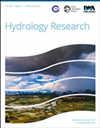加强中国西南部重庆市地下水对硝酸盐污染的脆弱性评估:将新型可解释机器学习算法与 DRASTIC-LU 相结合
IF 2.4
4区 环境科学与生态学
Q2 Environmental Science
引用次数: 0
摘要
地下水对硝酸盐的脆弱性评估是衡量目标区域地下水硝酸盐潜在污染程度的标准。本研究的主要目的是利用传统的 DRASTIC-土地利用评估框架、地下水硝酸盐分布数据和三种机器学习模型(随机森林 (RF)、XGBoost 和支持向量机)对中国西南部重庆市的地下水硝酸盐是否超过阈值(含氮量为 10 mg/L)进行分类。采用准确率和 F1 分数指标对模型进行评估,最终将分类概率作为地下水易受硝酸盐影响的指数。结果表明,RF 模型优于其他两个模型,获得了最高的准确率(测试结果为 92.9%)、卡帕值(测试结果为 0.857)和曲线下面积(测试结果为 0.948)。此外,SHAPLEY Additive exPlanations(SHAP)解释器显示,含水层导电性、岩性、农业活动、高强度开发区域和地下水补给是对地下水脆弱性影响最大的指标。最终绘制的地下水脆弱性等级分布图(分辨率为 1 千米×1 千米)显示,高脆弱性等级和极高脆弱性等级主要集中在城市高强度开发地区以及东南部、东北部和中部城市地区的岩溶槽谷。这项工作是重庆首次尝试使用机器学习模型进行地下水脆弱性评估。本文章由计算机程序翻译,如有差异,请以英文原文为准。
Enhanced groundwater vulnerability assessment to nitrate contamination in Chongqing, Southwest China: Integrating novel explainable machine learning algorithms with DRASTIC-LU
Groundwater vulnerability to nitrate assessment serves as a measure of potential groundwater nitrate pollution in a target area. The primary objective of this study is to utilize the traditional DRASTIC-land use assessment framework, groundwater nitrate distribution data, and three machine learning models (random forest (RF), XGBoost, and support vector machine) to classify whether groundwater nitrate exceeds a threshold (10 mg/L as nitrogen) in Chongqing, southwest China. Model evaluation is conducted using accuracy and F1 score metrics, and ultimately, the classification probabilities are employed as the groundwater vulnerability to nitrate index. The results indicate that the RF model outperforms the other two models, achieving the highest accuracy (92.9% for testing), kappa value (0.857 for testing), and area under the curve (0.948 for testing). Furthermore, the SHapley Additive exPlanations (SHAP) interpreter revealed that aquifer conductivity, lithology, agricultural activities, areas with high-intensity development, and groundwater recharge are the most influential indicators of groundwater vulnerability. The final groundwater vulnerability level distribution map, with a resolution of 1 km × 1 km, reveals that high and extremely high vulnerability levels are concentrated in areas with high-intensity urban development and karst trough valleys in the southeastern, northeastern, and central urban areas. This work represents the first attempt at using machine learning models for groundwater vulnerability assessment in Chongqing.
求助全文
通过发布文献求助,成功后即可免费获取论文全文。
去求助
来源期刊

Hydrology Research
Environmental Science-Water Science and Technology
CiteScore
5.30
自引率
7.40%
发文量
70
审稿时长
17 weeks
期刊介绍:
Hydrology Research provides international coverage on all aspects of hydrology in its widest sense, and welcomes the submission of papers from across the subject. While emphasis is placed on studies of the hydrological cycle, the Journal also covers the physics and chemistry of water. Hydrology Research is intended to be a link between basic hydrological research and the practical application of scientific results within the broad field of water management.
 求助内容:
求助内容: 应助结果提醒方式:
应助结果提醒方式:


